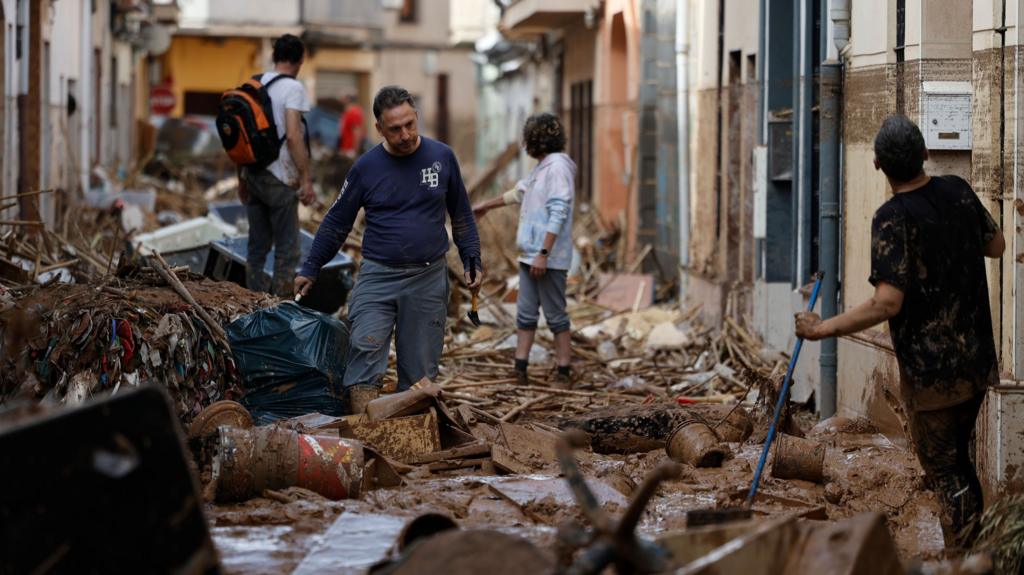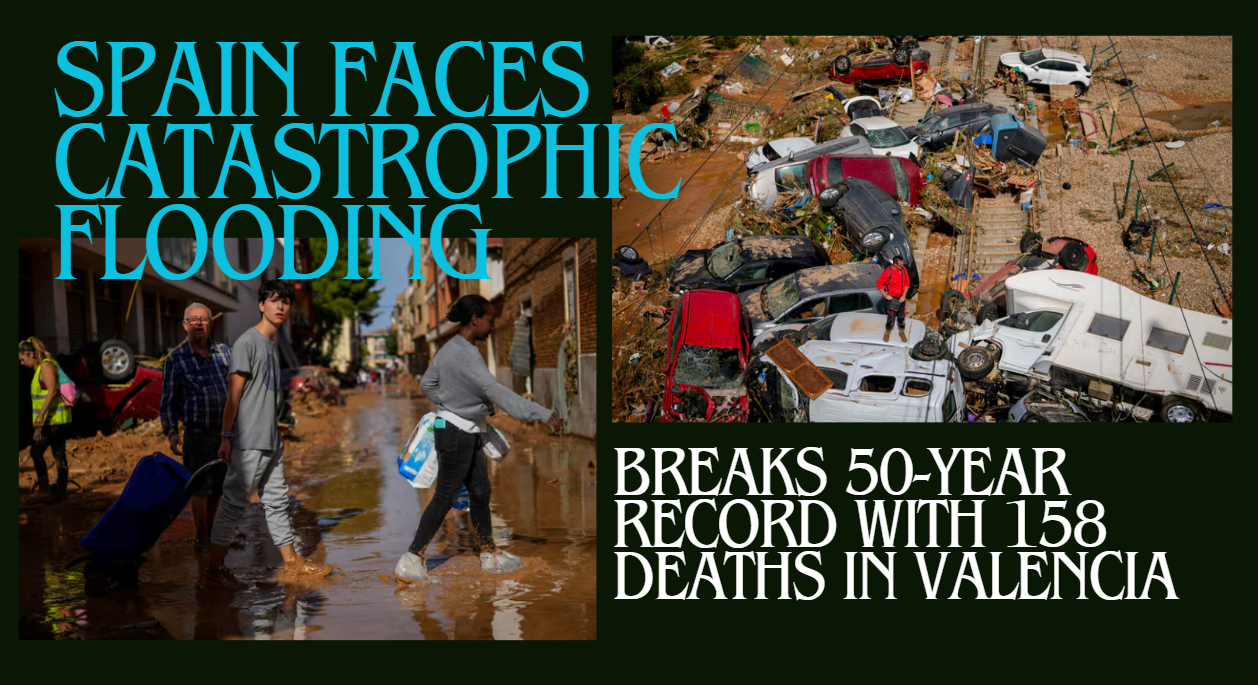Headline: Spain Faces Catastrophic Flooding, Breaks 50-Year Record with 158 Deaths in Valencia
Madrid: Spain has been struck by devastating floods that have claimed the lives of at least 158 people, with eastern Valencia bearing the worst of the impact. According to reports from Reuters, 155 deaths have been confirmed in Valencia alone, and search efforts are still underway for missing persons.


This extreme weather event brought a record-breaking amount of rain to Valencia. On October 29, a shocking 12 inches of rain fell in just eight hours—an amount equivalent to a year’s worth of rainfall. This heavy downpour led to flash flooding, leaving residents with little to no time to evacuate. Located on the Mediterranean coast, Valencia is home to around five million people, making this event one of the most deadly in the region’s recent history.
The flood marks the deadliest in Spain since 1973 when 150 people lost their lives. Valencia itself has a tragic history with flooding, as the city also faced a severe flood in 1957 that took the lives of 81 people.
Emergency Measures and Concerns of More Rain
The Spanish government declared a three-day emergency on Wednesday, which remains in effect and will last through Saturday, November 2. Prime Minister Pedro Sánchez has urged people to remain indoors as more rain is forecasted for Friday, raising concerns that the situation could worsen. With streets already damaged and critical infrastructure like communications and electricity lines severely impacted, many areas are cut off from city centers.
Over 1,000 military personnel have been deployed to assist with relief efforts in the hardest-hit regions, although local residents have expressed frustration with delays in receiving adequate support.
Why Did This Rainfall Happen?
Meteorologists are attributing the intense rainfall to a “cut-off low-pressure system,” where a mix of cold and warm air created thick cloud cover, resulting in downpours. This weather pattern, referred to as the “DANA Effect” in Spanish, has caused heavy rain and flooding in several parts of the world recently.
Adding to this is the warming of the Mediterranean Sea, which scientists believe has played a role in the severity of the storm. In August, the Mediterranean reached a record temperature of 28.47°C (about 83°F), the highest ever recorded. Warm waters fuel storms by providing energy for the formation of clouds, which can lead to heavy rainfall. This combination of factors has created conditions that are driving extreme weather events across the region.


Historical Context of Spain’s Flooding
Spain has faced major floods in the past, but this event is exceptional. According to the BBC, this is the worst flood in Spain in the past 50 years, with the previous deadliest flooding occurring in 1973, which saw 150 casualties. Additionally, Valencia has had prior experience with DANA storms, particularly in the 1980s when two significant storms caused severe flooding and property damage.
Ongoing Rescue and Relief Efforts
The Spanish government and military are working around the clock to aid those affected, despite the difficulties posed by widespread infrastructure damage. With roads destroyed and communication lines severed, emergency teams are facing considerable challenges in reaching certain areas. Prime Minister Sánchez’s administration has promised to expedite assistance and is coordinating with local agencies to prioritize rescue and recovery operations.
Global Implications of Spain’s Weather Disaster
The flood in Spain is part of a larger trend of extreme weather events exacerbated by climate change. The record-breaking Mediterranean temperatures, coupled with frequent “cut-off low-pressure systems,” serve as reminders of the increasing unpredictability in global weather patterns. Scientists and climate experts warn that such intense weather events are likely to become more common as global temperatures continue to rise.
For Spain, the disaster has left behind a trail of destruction, grieving families, and a community trying to make sense of an unprecedented event. The recovery process will undoubtedly take time and resources, with many experts and leaders calling for stronger climate resilience and preparedness measures to minimize the damage from similar events in the future.

